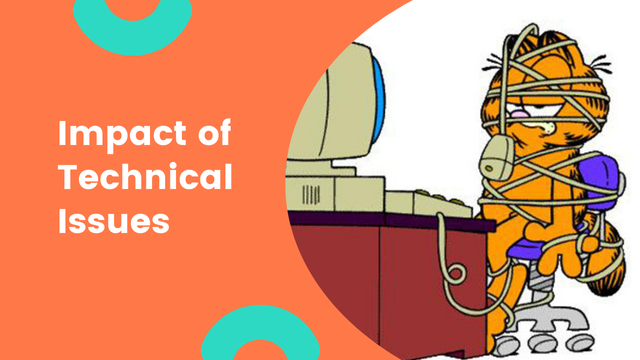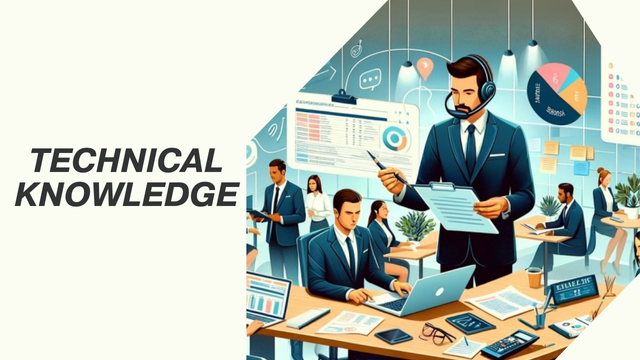Technical Knowledge and Management of the Challenges in the 21st Century
Due to the development of technology and globalization, technical problems have become part and parcel of human life. Software failure, hardware malfunction and other troubles in this area can upset people’s activities, companies’ and even infrastructures’ functioning. This article explores various technical problems, their consequences, and techniques of managing and mitigating them.
Most Frequent Form of Technical Problems
Technical issues exist in all domains of information, and each of them implies its specific problem. Here are some of the most prevalent categories
1.Hardware Failures:
Often, failures in physical components like hard disk, processor, or network resource could result to system halt, loss of data or connection problem. Also, as indicated earlier, the solutions to hardware issues are repairs or replacement and these processes are tiresome as they are usually expensive.
2.Software Glitches:
Sometimes due to bugs in the software, compatibility problem or because of corrupt files, the system behaves abnormally, crashes or may lose its functionality. They are most of the time resulting from coding mistakes, defective codes, or obsolete languages or settings.
3.Network Problems:
Lack of connectivity, low bandwidth or server down times can all impact on critical organisational communication and service access. Network related issues pose some of the biggest concerns especially for environments that require the internet for remote working.
4.Cybersecurity Threats:
Problems that may result from viruses, worms, Trojan horses, spyware, and phishing may lead to other data integrity and system security concerns. Such threats, mostly take advantage of weak spots in software applications, or people’s failings.
5.System Overloads:
High I/O operations consume more memory or processing strength of the computer and result in system hang or slow performance. Precarious situations are characterized by a high level of multiple tasks in the software or its inadequate refinement.
6.User Errors:
Technical issues can also be issues created by the users themselves through wrong setting, deletions amongst others. Although these are avoidable problems they; spring up from lack of training or awareness.

Impact of Technical Issues
The consequences of technological problems can be quite different depending on their nature and circumstances. Key areas of impact include:
1.Productivity Loss:
Ever heard of technical challenges? These are real and affect the individual, business, workflow and projects big time. Incidents that involves problem identification and solving decreases efficiency and productivity of organizational tasks.
2.Financial Costs:
In consequence, such operations cause damages and equipment replacements, which lead to high expenses for stopping the machines. For businesses in particular, money lost due to system breakdowns, or service interruptions for instance, are cumulative.
3.Reputation Damage:
Technical issues that have recurring nature are likely to reduce the confidence that customers, clients or stakeholders have in the organizations. Problems with the technology may be heavily criticized if they are affecting the quality of service being delivered or the security of data being processed.
4.Data Loss:
Unresolved technical issues create vulnerability to loss by acquiring important information and hence dangerous for any person or group of individuals. Most of the time, lost data is costly to retrieve and, in some cases, is irretrievable.
5.Operational Disruption:
For instance, technical problems can manifest themselves in an organization involved in providing care, moving people or supplying energy- critical sectors to society whose breakdown invites complications in health, mobility, and energy provision.
Measures, Pertaining to the Resolution of Technical Problems
There are usually several paths one can take to manage technical issues successfully, and all of them presuppose that this process should be of a preventive character and that technical expertise together with organizational and communication skills can help achieve good results.
Here are some strategies:
1.Regular Maintenance
The details include: Such updates, patches, and hardware checks will reduce many technical issues before they occur. Scheduled maintenance will guarantee systems are safe, optimised, and capable of working with new technology.
2.Robust Troubleshooting Processes:
Clear procedures for the identification and work through of technical problems reduces time loss. A detailed record of these issues and how to solve them can be of great help on how best to approach the problem solving process.
3.Investing in Training:
Making a user aware about how best to go about using the system or alarming them about potential system dangers also decreases the occurrence of user related errors and helps in increasing the systems stability.
4.Backup Systems:
This simply means that in case of a failure, data that is important will be retrieved from a backup. Having Cloud solutions and duplicative systems enhance defense mechanisms even further.
5.Monitoring and Alerts:
Hence, using other tracking and notification features help in identifying impending problems as they occur in real-time. It also stresses at the importance of coming up with early solutions so that small issues do not become bigger.
6.Engaging Experts:
When it comes to intricate situations, seeking help from I.T experts or reliable service providers helps in proper identification with probable solutions.
7.Disaster Recovery Plans:
This paper argues that it is possible to create a disaster recovery plan to guarantee organisations can be back up and running after significant technical catastrophes.
Prevention Through Innovation
Coping with current technical problems is obviously relevant but prevention is also obligatory. Many novel technologies including artificial intelligence (AI) and machine learning are progressively helping in early risk identification of technical issues. Data and analytical models generated by AI can be used to analyze the data to determine where failures are starting to occur or might occur in the future so that they can be prevented. They also improve system reliability through distribution of loads and availability of flexible performances. These innovations lower probability of system overloads and values opens quickly and efficiently from failures.
Conclusion
It is for this reason that technical problems because they are inevitable do not have to be unmanageable. It was understood that all of them directly influence people and organizations, and that by their understanding their nature and impact, one can take preventive actions and prevent them from undermining efficiency. Adopting both primary and secondary layers of defense, integrated with innovative solutions and professional help guarantees that all technical obstacles are met and resolved, which leads to creating a more secure digital environment.
ALSO READ THIS:
International Communication Websites in the Context of a Globalised World

